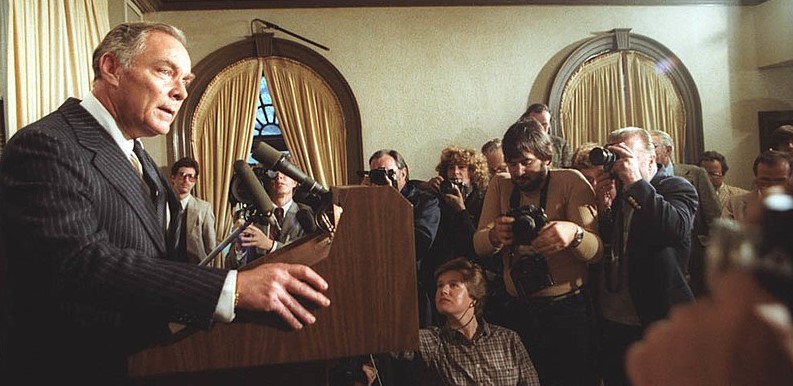Authors:
Historic Era: Era 10: Contemporary United States (1968 to the present)
Historic Theme:
Subject:
October 2020 | Volume 65, Issue 6


Authors:
Historic Era: Era 10: Contemporary United States (1968 to the present)
Historic Theme:
Subject:
October 2020 | Volume 65, Issue 6
Editor's Note: Ray Locker is the author of Haig's Coup: How Richard Nixon's Closest Aide Forced Him from Office and Nixon's Gamble: How a President’s Own Secret Government Destroyed His Administration.

Emotional and breathless, Secretary of State Alexander Haig faced an anxious press corps in the White House briefing room at 4:14 p.m. on March 30, 1981. An assassination attempt had just been made on President Ronald Reagan, who lay anesthetized on an operating room at George Washington University Hospital. Haig had scrambled from the State Department to the White House to manage the crisis. A nervous, jittery nation needed to know someone was capable of making decisions in the White House.
“Constitutionally, gentlemen, you have the President, the Vice President, and the Secretary of State in that order,” Haig said. “As of now, I am in control here, in the White House, pending return of the Vice President.”
That brief moment in the White House, when he strove to display calm, forever marked Al Haig as impulsive and unstable as he appeared to grab for power and fill the vacuum created by the attempt on Reagan’s life. But it was not the first time Haig had assumed authority that was not his to take. Haig believed he was in control that day in 1981 because he knew what it meant to be in charge at the White House. During the fifteen months from May 1973 to August 1974, when he served as President Richard Nixon’s chief of staff, Haig was, in the words of Watergate special prosecutor Leon Jaworski, the nation’s “thirty-seventh-and-a-half president.”
While the thought of an insider coup in the White House still seems like an exaggerated season of “House of Cards” or “Scandal,” it actually did happen. During his fifteen months as President Richard Nixon’s chief of staff in 1973 and 1974, Alexander Haig created the circumstances that led to Nixon’s eventual resignation. It was Haig who engineered the exposure of the secret White House taping system that recorded all of the president’s conversation in the Oval Office, on his telephone and in a series of other rooms throughout the White House, the Old Executive Office Building and the presidential retreat in Camp David, Maryland.
During the final months of the Nixon administration, as the president desperately tried to withstand the onslaught of negative press reports, congressional investigations, and federal prosecutions spurred by the Watergate scandal, it was Haig who controlled the president’s agenda and determined who met with the president and whether to even tell Nixon about many of the decisions made in his name.
Haig stacked the deck against Nixon’s legal defense, hiring both Nixon’s